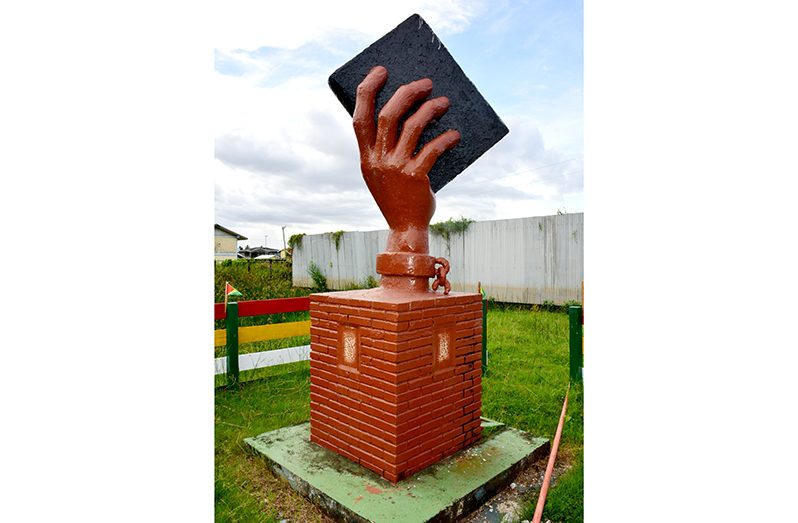EMANCIPATION typically refers to releasing someone from a past restraint or legal restriction.
In a broader sense, it is also used in campaigns to secure political rights, equality, or economic and social rights. It is also frequently used for a particular marginalised group or in a discussion of various topics.
According to the history on a small billboard next to the Emancipation Monument at BV, it states that “the freeing of slaves throughout the British colonies seemed realistic when the Emancipation Bill was approved in Great Britain on August 18th, 1833. The final act took effect on August 1st, 1834, and this day was declared a public holiday in British Guyana by then-Governor Sir James Carmichael Smyth.
However, the supposedly freed slaves were forced back onto the plantations to work as there was a binding condition to the Emancipation Act that stipulated a period of apprenticeship; six years for field slaves and four years for house slaves.
Apprenticeship did not offer any better treatment as many continued to experience the same harsh treatment as they did in slavery. By 1838, the British government felt that it would cause tension if one set of apprenticeship workers [house slaves] were set free while the others (field slaves) had to endure two more years of hardship and so on August 1st, 1838, all apprenticeship workers were freed.
With emancipation, many of the enslaved shunned plantation life and some earned a living by planting cash crops, while others were employed for their skills. As time passed, the ex-slaves accumulated their money and purchased lands, estates and villages. One such village is Beterverwagting (BV).
The Emancipation Monument, located on Republic drive, Beterverwagting, East Coast Demerara, was built as a memorial to the 62 former slaves who bought the village circa 1840 for $22,000. The foundation stone was laid in 1995 and was completed in 1996 at the cost of $225,000. The monument consists of a broken chain attached to a hand or pulling a book. The book represents the physical book that was signed by the ex-slaves who purchased the village. The monument is believed to represent the victory, freedom and jollification of the community.”
In Guyana and throughout the Caribbean, Emancipation Day is celebrated on August 1 To pay homage to the former slaves who bought the Beterverwagting Plantation, as it was referred to in the earlier days, the Emancipation Monument was erected.





.jpg)








